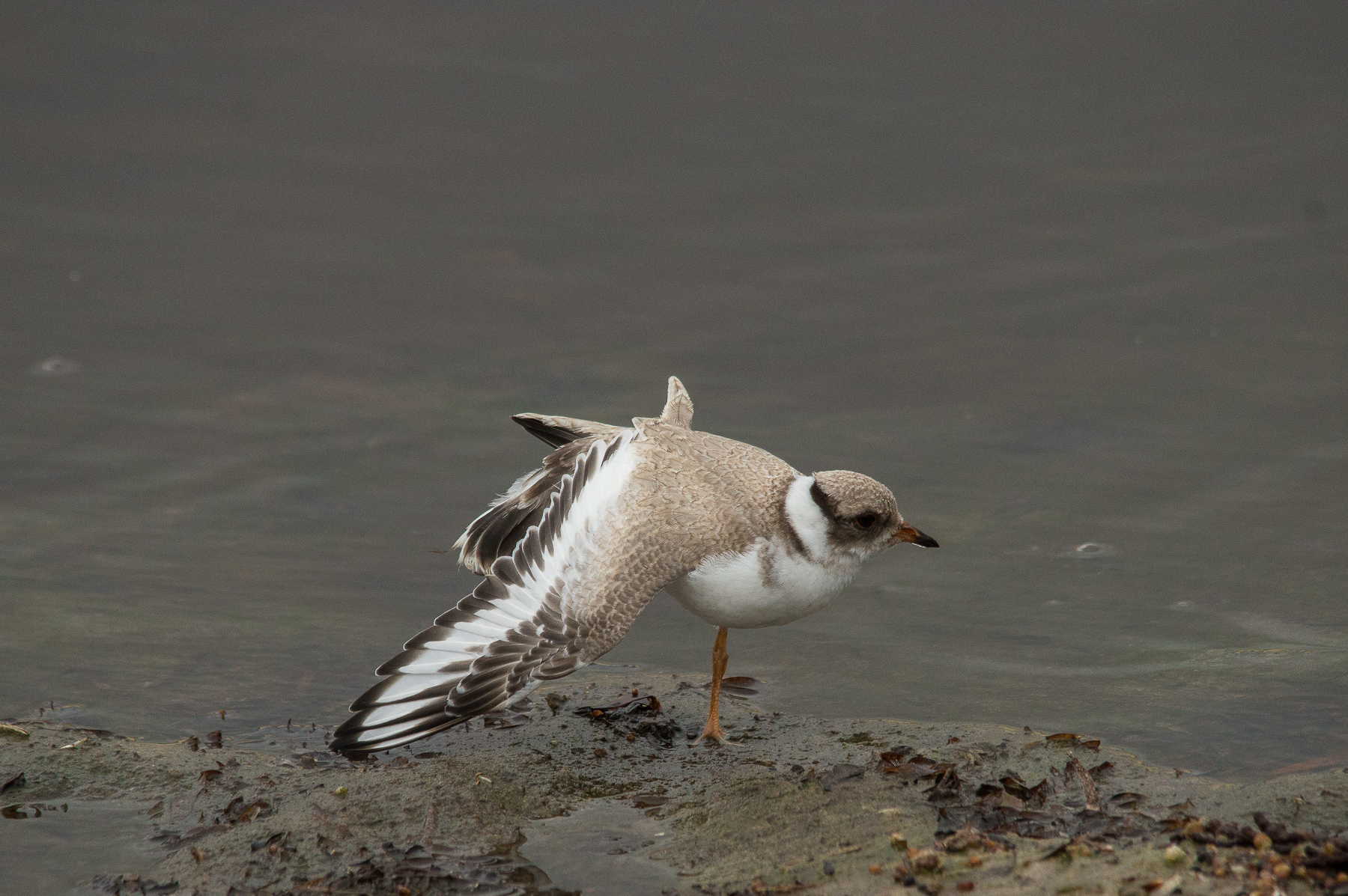Adelaide beaches are popular for people, and they’re also home to hooded plovers. Here’s all you need to know about Australia’s most threatened beach-nesting bird.

Hooded plovers, or hoodies as they are lovingly called, are only found at a few spots along Adelaide’s long coastline – including Henley Beach, West Beach and Seacliff.
They love beach life, as it provides them with vast, open sandy space to live, breed and feed.
That may sound odd – little birds needing big open space, but these ocean beach specialists are very selective with the space that they make a home for their families.
This is because they need space on the beach to lay their eggs, find food, provide shelter for their chicks and group together (flock) for safety when they’re not paired up for breeding.
This can be quite a challenge, especially when trying to avoid people, dogs, cats and bigger birds that want a hoodie snack, plus their breeding season coincides with the most popular time to visit the beach in summer.

How many hooded plovers are left?
There are about 70 hooded plovers on the Adelaide and Fleurieu Peninsula beaches combined.
This is considered one population because the birds move around between beaches. How the birds are going on the Fleurieu directly impacts how many birds we see in Adelaide.
The total number of hooded plovers in South Australia (including our hoodie population) is estimated to be around 800 birds.
Australia has two sub-species of hooded plover: eastern and western. There’s estimated to be less than 3000 of each.
Ours are part of the eastern population, which extends into Victoria. It once continued all the way up into southern Queensland but nowadays, eastern hoodies are only found on the southern coast.
Hooded plovers are only found in Australia, so we have a lot of responsibility to protect them.
Why are hoodies so particular with their beach spots?
Even though there are many beaches in Adelaide, they’re not all suitable for hoodies.
While some beaches have the kind of dunes and sand that the birds love, if they don’t offer places for chicks to feed, they’re just not going to work. We’re sure you can relate!

Why is the hooded plover endangered?
Life on the beach comes with many challenges. Especially because the hoodies’ breeding season is peak beach time – August until March!
Hooded plovers nest on the dry sand, between the high tide mark (where the wet sand ends) and the dunes. This gives the adults and chicks ready access to finding their favourite food on the beach.
Hoodies don’t “build” nests but instead make a scrape in the sand to lay their eggs in. Their eggs blend in perfectly.
This hides them from predators but also makes them hard for beach-goers to see too and easy for them to be crushed.

When hooded plover chicks hatch they are no bigger than a 50-cent piece. They still need to get their own food though, which means travelling from safety to the water’s edge – which is often very busy in summer!
Not surprisingly, these teeny tiny chicks have a lot of predators – such as magpies, seagulls, foxes and dogs. Even dogs that don’t mean any harm are terrifying for these tiny birds.
Hoodies will try to lead predators away from their nests and chicks. This can prevent eggs from being kept at the right temperature or expose chicks to other lurking predators.
Can baby plovers fly?
Nope. Hooded plover chicks can’t fly for the first 35 days of their life.
Once they can fly (known as fledging), their chance of survival is greatly increased but not guaranteed. Last breeding season, only 14 chicks made it to fledging stage.
At full size, hooded plovers are still only three times as big as they were when they hatched.

How long do baby plovers stay with parents?
Despite being suuuuuuper fluffy (and adorable), hooded plover chicks can’t regulate their temperature very well. That means that for the first 10 days of their life they regularly need to snuggle with mum or dad to keep warm *swoon*.
Snuggling isn’t just for staying warm though; it’s also important on days when the sand is too hot for little hoodies’ feet. On these days, mummy or daddy needs to brood the little plovers, while standing on wet sand (which is cooler).

What do hooded plovers eat?
Hooded plovers eat sandhoppers, snails, worms, shellfish and insects. Delish!
How long do plover birds live for?
Hooded plovers live for around 15 years – but can be up to 20 years if they’re really lucky. Of course, this is only if they survive to adult stage.
How can I help?
Beaches are a popular place to walk dogs but keeping them on a leash is one of the best ways to help hooded plovers.
Here are some other ways you can help these threatened birds:
- Keep an eye out for signs indicating there are nests or chicks on the beach.
- Only walk below the high tide mark (on the wet sand).
- Move away quietly when you spot hoodies on the beach.
- Tell everyone you know to do the same!
Thanks for playing your part to help prevent the extinction of this species.

This story was originally published in September 2021.